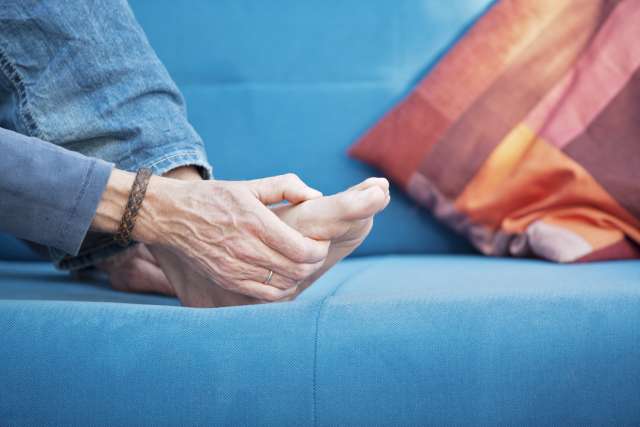Dear Doctors: I’ve been dealing with a corn on top of my little toe for almost a year. I used the patches you get at the drugstore and it went away, but a few months later, it came back. Why? How do I stop that from happening?
Dear Reader: Corns are raised, hardened bumps that can form on areas of the foot where a bone is exposed to repeated or sustained friction. They often develop on the knuckles of the toes, which are subjected to motion and pressure with each step that we take. Corns on the tops of the toes are quite hard, while those that develop between the toes tend to have a soft, almost springy texture. They can also form on the soles of the feet, typically in small clusters. Known as seed corns, they get their name from their grainlike appearance.
To learn why a corn keeps developing, you have to look at your shoes. Footwear that is too tight, too loose or with heels that are too high can create points of pressure. Foot shape, posture, alignment, how someone walks and toenail length also play important roles in the fit of a shoe or a boot. So do how people use their feet. A dancer, runner, construction worker or mail carrier each engage in pursuits that call for footwear that is somewhat customized.
When fit is poor, the skin responds by summoning a protective barrier of tougher cells. The longer that friction lasts, the thicker the barrier becomes. It’s a process similar to the formation of a callus, but with one important difference: Corns can not only grow upward, but inward as well. And because they can penetrate the deeper tissues of the foot, inflammation and infection can occur.
Corns also contain a central core that comes to a sharp and hardened point. Any contact with that point transfers pressure directly to the tissues below. Once a corn has formed, even shoes that fit properly can be quite painful.
Your corn is returning because you have not yet fully addressed the cause. The good news is that the location of the growth is showing you exactly where the pressure, friction or other types of irritation are occurring. Assess your footwear, and, difficult as it may be, ditch any pairs that are less than a perfect fit. If you regularly wear socks or hose, you should also evaluate whether those fabrics may be playing a role. For some people, custom insoles may be needed.
Drug store treatments use salicylic acid to gradually thin the tissues of the corn and can be quite effective. Begin by softening the area with a soak in warm water. Gently remove the topmost layer of dead cells with a pumice stone. The key words here are “gently” and “topmost layer.” Never cut or shave a corn; it’s easy to damage healthy tissue and cause an infection. Protecting the area with doughnut-shaped corn pads can be helpful, both during and after treatment. If a corn resists treatment, see your health care provider for additional options.
(Send your questions to [email protected], or write: Ask the Doctors, c/o UCLA Health Sciences Media Relations, 10960 Wilshire Blvd., Suite 1955, Los Angeles, CA, 90024. Owing to the volume of mail, personal replies cannot be provided.)





